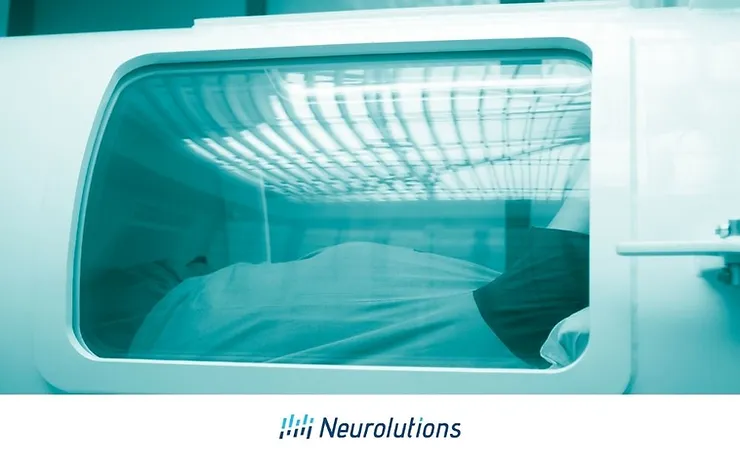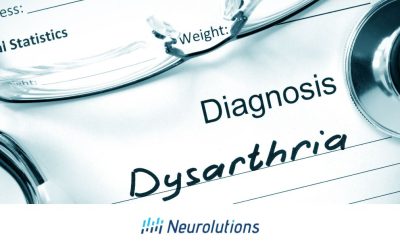Hyperbaric oxygen therapy (HOT) is a medical treatment that delivers the breathing of pure 100% oxygen through a specialized medical apparatus. It has long been used for the decompression of deep-sea divers to avoid developing a painful disorder termed “the bends.” Besides preventing “the bends”, HOT has been used by hospitals for over 40 years to treat non-healing wounds, serious infections, radiation injuries, and carbon monoxide poisoning. In the 1960s, HOT began to emerge as a treatment option for cerebral vascular diseases (1).
Today, HOT is utilized in the treatment of a wide variety of disorders with a focus on hypoxia-induced disorders. This includes the treatment of strokes caused by arterial blood clots. The following article describes the use of HOT in the clinical treatment of stroke patients and stroke rehab, including its benefits and risks.
Understanding Stroke
There are two primary types of stroke: ischemic and hemorrhagic. Around 87% of all strokes are ischemic strokes (2). An ischemic stroke is caused by the blockage of an artery or, in rare instances, a vein. That blockage is caused by a blood clot in almost all instances. A hemorrhagic stroke is caused by bleeding in the brain. This happens as a result of a traumatic injury such as a blow to the head, burst artery or vein, or other reason (3). There are two different types of ischemic stroke: thrombotic and embolic.
Thrombotic Ischemic Stroke:
Thrombotic strokes are the most common ischemic strokes, and they are caused by a blood clot that develops in the blood vessels inside the brain. It is almost always caused by plaque build-up in the carotid arteries that supply blood to the brain from the heart. That plaque build-up is typically caused by atherosclerosis, which is caused by an abnormally high cholesterol level in the blood (4). The clot, also called a thrombus, results in significantly reduced oxygen and nutrients reaching the brain.
Embolic Ischemic Stroke:
Embolic strokes are caused by a blood clot, or atherosclerotic plaque, that develops elsewhere in the body and travels to one of the blood vessels in the brain through the bloodstream. These often occur in adults living with heart disease, or as a complication of surgery on the heart, circulatory system, or thrombosis in the legs. Moreover, this type of stroke often occurs extremely suddenly and without prior warning signs. Around 15% of embolic strokes occur in people living with Atrial Fibrillation (AF), which is a common heart disorder (5). The risk of embolic ischemic stroke is also tremendously increased in people undergoing any type of surgery within six months of a stroke, with a 50% risk within the first seven days post-surgery (6).
Oxygen Levels and Stroke:
Brain cells begin to die if they are without oxygen for even 4-5 minutes. Strokes occur when clots block the flow of oxygenated blood to specific areas of the brain, leading to reduced oxygen levels and eventual cell death. Depending on the location of the clot and where cell death occurs, different stroke symptoms occur. However, the most common symptom is paralysis or weakness with resultant impairment of motor skills.
How HOT Works
Administering oxygen is often used as a strategy to lessen the destruction of brain cells, brain tissue, and the neural network, while also boosting the formation of new blood cells in the brain as well as neurons.
HOT differs from the routine delivery of oxygen to patients via cannulas in the nose. The air we normally breathe is 21% oxygen (7), and the oxygen delivered via nose cannulas is usually around 69.7% (8). HOT provides the delivery of 100% oxygen into the lungs while the patient is also exposed to increased atmospheric pressure, or hyperbaric pressure. That pressure is around 2.5 times higher than the normal pressure of breathing air in our atmosphere (9).
HOT can be performed in an entire room in a hospital, or it can appear as similar to a MRI machine in which the person lies prone and face-up inside it. This smaller HOT device is generally cylindrical in shape, composed of steel and clear acrylic, and around 41 inches in diameter.
By utilizing HOT rather than standard oxygen delivery, there is an increased capacity to optimally oxygenate the blood and enable the oxygen to more quickly reach the tissues and cells. This can reduce the likelihood of cell death that leads to tissue/organ impairment. When the quantity of cellular oxygen is insufficient, organs can fail. This explains why people living with congestive heart failure often progress to kidney failure even before their heart weakens to a point of no longer beating.
Additionally, cognitive impairments in stroke patients, such as memory loss, are usually the consequence of brain cell death combined with nerve-signaling destruction.
Hyperbaric Oxygen Therapy (HOT) for Stroke Rehabilitation
The use of Hyperbaric Oxygen Therapy for stroke patients remains a subject of ongoing research and discussion. While some healthcare providers may consider it as a treatment option in certain cases, it is not universally accepted as a standard of care for stroke.
That said, there are proposed benefits of HOT as they relate to stroke rehabilitation:
- Increased Oxygen Supply: One of the primary mechanisms of HOT is to deliver higher levels of oxygen to body tissues, including the brain. This can potentially support the oxygen-starved areas of the brain affected by stroke (ischemic stroke) and promote healing and recovery. (11)
- Reduction in Brain Swelling and Edema: After a stroke, brain tissue can become swollen and edematous, leading to increased pressure within the skull. Some proponents of HOT suggest that the increased oxygen levels may help reduce brain inflammation, swelling, and edema, potentially mitigating damage and improving outcomes. (12)
- Infection Prevention: Patients who have had a stroke and are hospitalized may be at an increased risk of infection due to their overall health status and the potential for complications related to immobility. HOT is believed by some to help boost the immune system and potentially aid in preventing or treating infections.
- Cognitive Function Improvement: A 2021 article in Biomolecules noted that numerous studies have shown improved performance on cognitive assessments following HOT treatment for brain injuries, including stroke. Additionally, findings from diverse studies have shown improved short-term memory and overall cognition in stroke patients at later post-stroke stages that have used HOT treatment (13).
Despite possible benefits, the decision to use HOT as part of a stroke treatment plan should be made in consultation with a qualified healthcare professional who can weigh the potential benefits and risks for the individual patient.
Hyperbaric Oxygen Therapy (HOT) Side Effects and Risks
The FDA has approved outpatient HOT for the treatment of at least 13 health conditions, not including stroke (14). HOT is also utilized “off-label” for the treatments of other disorders, such as Chronic Obstructive Pulmonary Disease (COPD) and COVID-19 “long-haulers” with a history of severe asthma.
Of all side effects resulting from HOT treatment, light-headedness and fatigue are two of the milder effects. More severe potential side effects include lung damage, rupture of the middle ear with resultant deafness, nasal sinus damage, vision damage such as increased near-sightedness, and oxygen poisoning (15). For this reason, the oxygen dose administered during HOT needs to be determined specifically for the individual receiving it, and the HOT treatment should be halted if either mild symptoms do not abate quickly or severe symptoms emerge.
HOT is not advised in people with a prior history of a collapsed lung, specific lung disorders such as Interstitial Lung Disease (ILD), and anyone who has undergone recent ear surgery or injury. It is also not advised for people taking certain medications if the medication cannot be discontinued during the entire course of treatment with HOT (16).
Is Hyperbaric Oxygen Therapy Right For Me?
If you or someone you know is considering HOT as a treatment for stroke, it’s essential to consult with a qualified healthcare professional who can provide the most up-to-date information and recommendations based on the latest research and guidelines. They can assess the individual’s specific medical condition and discuss the potential risks and benefits of HOT in the context of stroke.
Hyperbaric Oxygen Therapy (HOT) in Stroke Rehabilitation: Potential Benefits and Controversies
Hyperbaric Oxygen Therapy is a medical treatment that involves breathing pure oxygen in a pressurized chamber, typically at pressures higher than sea level. While HOT is well-established and widely used for certain medical conditions, its use in the treatment of stroke patients remains a topic of ongoing research and debate.
Some studies and anecdotal reports have suggested that HOT may have certain benefits for stroke patients, such as improved neurological outcomes, reduced disability, and enhanced quality of life. These potential benefits are thought to be related to the increased oxygen levels in the bloodstream, which can promote healing and reduce inflammation.
As a result, the use of HOT for stroke patients is not universally accepted as a standard treatment option, and it is not routinely recommended as part of stroke care protocols. Rehabilitation after a stroke typically involves a multifaceted approach that goes beyond any single treatment modality like HOT. Comprehensive stroke rehabilitation aims to address various aspects of recovery, maximize functional independence, and prevent further health complications. It is also worth exploring other treatment interventions for stroke rehabilitation and recovery that are supported by clinical evidence.
References:
- Ding Z, Tong WC, Lu XX, et al. (2014). Hyperbaric oxygen therapy in acute ischemic stroke: A review. Interventional Neurology 2(4): 201-211. Webpage: https://www.ncbi.nlm.nih.gov/pmc/articles/PMC4188156/
- American Stroke Association. Types of Stroke and Treatment. Webpage: https://www.stroke.org/en/about-stroke/types-of-stroke#:~:text=Ischemic%20Stroke%20(Clots),for%2087%25%20of%20all%20strokes.
- Centers for Disease Control (CDC). About Stroke. Webpage: https://www.cdc.gov/stroke/about
- Tampa General Hospital (Tampa, FL). Thrombotic Stroke. Webpage: https://www.tgh.org/institutes-and-services/conditions/thrombotic-stroke
- Johns Hopkins Medicine. Types of Strokes. Webpage: https://www.hopkinsmedicine.org/health/conditions-and-diseases/stroke/types-of-stroke#:~:text=Ischemic%20strokes%20are%20further%20divided,Embolic%20strokes
- Ganatra RB. (July 21, 2022). Summary and Comment; Informing Practice – Perioperative Stroke Risk Highest for Surgeries Performed Soon After Ischemic Stroke. New England Journal of Medicine (NEJM) Journal Watch (Online only) Webpage: https://www.jwatch.org/na55135/2022/07/21/perioperative-stroke-risk-highest-surgeries-performed-soon
- US Food and Drug Administration (FDA). Hyperbaric Oxygen Therapy: Get the Facts. Webpage: https://www.fda.gov/consumers/consumer-updates/hyperbaric-oxygen-therapy-get-facts#:~:text=The%20air%20pressure%20inside%20is,heal%20and%20fight%20certain%20infections.
- Tseng HY, Yang SH, and Chiang HS. (2021). Impact of Oxygen Concentration Delivered via Nasal Cannula on Different Lung Conditions: A Bench Study. Healthcare (Basel) 9(9): 1235. Webpage: https://www.ncbi.nlm.nih.gov/pmc/articles/PMC8471110/
- National Library of Medicine, MedlinePlus. Hyperbaric oxygen therapy. Webpage: https://medlineplus.gov/ency/article/002375.htm
- National Library of Medicine, MedlinePlus. Hyperbaric oxygen therapy. Webpage: https://medlineplus.gov/ency/article/002375.htm
- Yan Y, Zhang X, An X, et al. (2022). The application and perspective of hyperbaric oxygen therapy in acute ischemic stroke: From the bench to a starter? Frontiers in Neurology 13 (Open Access) Webpage: https://www.frontiersin.org/articles/10.3389/fneur.2022.928802/full
- Ding Z, Tong WC, Lu XX, et al. (2014). Hyperbaric oxygen therapy in acute ischemic stroke: A review. Interventional Neurology 2(4): 201-211. Webpage: https://www.ncbi.nlm.nih.gov/pmc/articles/PMC4188156/
- Gottfried I, Schottlender N, and Ashery U. (2021). Hyperbaric Oxygen Treatment-From Mechanisms to Cognitive Improvement. Biomolecules 11(10): 1520. Webpage: https://www.ncbi.nlm.nih.gov/pmc/articles/PMC8533945/ https://www.ncbi.nlm.nih.gov/pmc/articles/PMC10216461/
- US Food and Drug Administration (FDA). Hyperbaric Oxygen Therapy: Get the Facts. Webpage: https://www.fda.gov/consumers/consumer-updates/hyperbaric-oxygen-therapy-get-facts#:~:text=The%20air%20pressure%20inside%20is,heal%20and%20fight%20certain%20infections.
- Johns Hopkins Medicine. Complications of Hyperbaric Oxygen Treatment. Webpage: https://www.hopkinsmedicine.org/health/treatment-tests-and-therapies/complications-of-hyperbaric-oxygen-treatment
- Gawdi R, and Cooper JS. (2023). Hyperbaric Contraindications. In: StatPearls [Internet]. StatPearls Publishing: Treasure Island, FL; [Updated April 8, 2023]. Webpage: https://www.ncbi.nlm.nih.gov/books/NBK557661/
- Carson S, McDonagh M, Russman B, Helfand M. Hyperbaric oxygen therapy for stroke: a systematic review of the evidence. Clin Rehabil. 2005 Dec;19(8):819-33. doi: 10.1191/0269215505cr907oa. PMID: 16323381. https://pubmed.ncbi.nlm.nih.gov/16323381/




